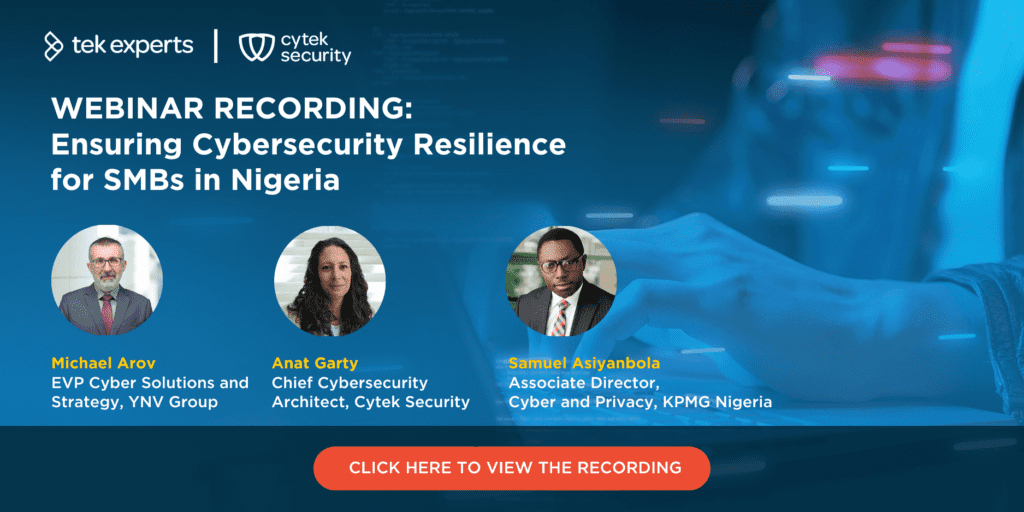ABOUT US
Cytek Security provides state-of-the-art cybersecurity solutions, delivered by the world’s top cyber experts. This includes advisory and implementation services, managed security services, and capability building.
Information security and cybersecurity are often used interchangeably, but they refer to different aspects of data protection. Understanding the distinctions between these concepts is crucial for organizations and individuals in today’s digital world, where sensitive information is constantly at risk.
Data protection has become increasingly important due to the rise in data breaches and the potential harm caused by unauthorized access to personal and sensitive information. Companies and individuals want to ensure their data’s confidentiality, integrity, and availability, which has led to the emergence of information security and cybersecurity as critical fields.
While information security and cybersecurity share the common goal of data protection, they have different scopes and approaches. Understanding the nuances between these two fields is essential for organizations to develop comprehensive data protection strategies.
What is Information Security?
Information security protects information systems, networks, and sensitive data from unauthorized access, use, disclosure, disruption, modification, or destruction. It encompasses various security measures, including physical, data, and network security. Information security professionals often conduct penetration testing to assess vulnerabilities and ensure information protection.
The core principles of information security include confidentiality, integrity, and availability. Confidentiality ensures that only authorized individuals can access data, integrity guarantees its accuracy and completeness, and availability ensures data is accessible when needed. By upholding these principles through security measures like firewalls and encryption, organizations can maintain the confidentiality and integrity of their information assets.
This field considers cybersecurity measures and the human element in ensuring comprehensive security across an organization’s operations and infrastructure.
What is Cybersecurity?
Cybersecurity focuses on safeguarding electronic systems from cyber threats like malware, ransomware, and hacking attempts. It plays a critical role in preventing unauthorized access to sensitive data and ensuring the security of information systems. Cybersecurity professionals utilize firewalls, encryption, and other security measures to protect against cyberattacks that can lead to data breaches and disruptions in computer networks.
Cyber threats encompass a range of malicious activities targeting digital systems. Common cyber threats include malware, phishing attacks, ransomware, denial-of-service attacks, and insider threats. Malware infiltrates systems to damage or steal data, while phishing uses deceptive emails to trick users into revealing sensitive information. Ransomware encrypts files for extortion, and denial-of-service attacks overwhelm networks to disrupt services. Insider threats arise within an organization, posing a significant risk to data security.
Information Security vs. Cybersecurity
While they share common goals and are closely related, a few key differences distinguish them.
Key differences
Scope
Information Security
It has a narrower focus. It revolves around protecting data’s confidentiality, integrity, and availability, regardless of its form—whether digital or physical. Information security includes safeguarding data from unauthorized access, alteration, or destruction.
Cybersecurity
It encompasses a broader spectrum of protection measures to defend digital systems, networks, and data from malicious attacks. It safeguards against hacking, malware, phishing, and denial-of-service attacks.
Data-Centric vs. System-Centric
It encompasses encryption, access controls, and data masking to safeguard against unauthorized disclosure, alteration, or data destruction.
The primary goal is to prevent unauthorized access to systems and data and mitigate the impact of potential breaches.
Focus on People and Processes
Information security places greater emphasis on the human and procedural aspects of security management. It involves establishing clear policies and procedures for handling sensitive information, enforcing access controls and authentication mechanisms, and effectively implementing measures to detect and respond to security incidents. Information security also encompasses employee training, risk assessment, and security governance.
While cybersecurity involves technical measures to secure digital assets, it also recognizes the importance of people and processes in mitigating cyber risks. This includes raising awareness about cybersecurity best practices among employees, implementing robust security policies and procedures, and conducting regular security training and awareness programs.
Regulatory Compliance
Information security professionals ensure compliance with regulations such as the Sarbanes-Oxley Act (SOX), the Gramm-Leach-Bliley Act (GLBA), and the European Union’s Data Protection Directive. Compliance with these regulations requires implementing appropriate technical and procedural controls to safeguard sensitive information.
Cybersecurity efforts often intersect with regulatory requirements, particularly in finance, healthcare, and government industries, where stringent data protection regulations exist. Compliance with standards such as the Payment Card Industry Data Security Standard (PCI DSS), Health Insurance Portability and Accountability Act (HIPAA), and General Data Protection Regulation (GDPR) is a crucial aspect of cybersecurity.
How Do Information Security and Cybersecurity Overlap?
Information security and cybersecurity overlap in their shared goal of protecting data. While information security focuses on all aspects of data protection, cybersecurity specifically deals with safeguarding digital systems. Together, they create a comprehensive defense strategy against threats to sensitive information.
Leveraging the Best Defenses for your Organization
Understanding the differences between information security and cybersecurity is crucial for organizations to develop robust security strategies tailored to their needs and risk profiles. In today’s interconnected world, the synergy between these two domains fortifies defenses against various risks, ensuring the confidentiality, integrity, and availability of valuable information assets. Both fields play vital roles in mitigating vulnerabilities and upholding robust protective measures to maintain the sanctity of data. Cytek provides organizations with robust security plans that encompass multiple touchpoints to safeguard them from cyber threats. Contact us today: https://cytek-security.com/contact/





